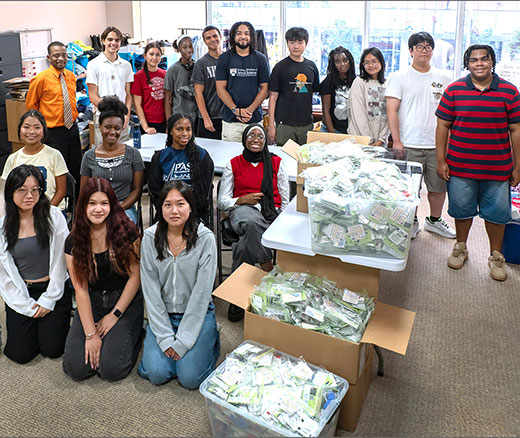
CHERISH Research Center’s Grant Is Renewed
Penn and Four Other Partners Focus on the Health Economics of Substance Use Disorder
Substance Use Disorder
In Their Own Words

The following excerpt is from an op-ed that first appeared in the Pittsburgh Post-Gazette on July 25th, 2024.
People with opioid addiction thrive when treated with medications and compassion. But if they miss doses or run out — or unnecessary government regulations keep them from getting care — their cravings and withdrawal symptoms will return with great force, often within a day. Few other diseases create this tremendous need for ongoing access to care.
Medications like buprenorphine and methadone represent the cornerstone of care. Yet for decades, the federal government-imposed mandates for doctors to get special training to prescribe these life-saving drugs and for patients to get them only at specific locations. It is not surprising that only 11% of people with Opioid Use Disorder (OUD) receive these vital medications, because only a few can meet all the bureaucratic demands.
Our system has been designed to exclude most patients, and it succeeds too often. This is a more fatal disease than cancer, yet we don’t use all the tools we have for effective treatment, in part because this disease is drenched with stigma.
In a rare bright spot, the pandemic afforded us a new way forward. COVID-related regulatory changes allowed healthcare providers to set up a telehealth line staffed by trained clinicians and recovery specialists, which not only makes the access to care much easier but means that the treatment can start the same day a patient calls.
It is hard to overstate what a seismic change this is. Before these changes — and in many places still — treatment can take weeks to start and often requires lengthy intake appointments with further delays to see a clinician for a medication prescription. The new system makes the patient’s chance for success much greater.
For the first time, we have a system that could be scaled up statewide in rural and urban areas alike, and is nimble enough to match a disease that killed 81,083 people nationally in 2023, driven by the synthetic opioid fentanyl. The model is far less costly and more patient-centered than the emergency room or most addiction treatment programs.
At Penn, our telehealth model is the CareConnect Warmline, which gives same-day appointments for people to start treatment with buprenorphine. Our navigators led by Nicole O’Donnell and physician Maggie Lowenstein have partnered with Penn Medicine OnDemand to provide help from 9 am to 9 pm seven days a week at 484 279-1679. We have answered 2,300 calls since our launch in November 2021 with funding from the Philadelphia Department of Public Health.
Our model is far less costly and more patient-centered than the ER or most treatment programs and allows patients to get started without delay with just a phone call.
We are not alone in fashioning this system. The heart and soul of our program — and others like it — are the peer workers and substance-use navigators who overcome hurdles that patients face daily.
In addition, our UPMC colleagues in Pittsburgh are running a similar service, along with other groups around the country. A new state effort seeks proposals to enhance the PA “GET HELP” line. It raises the possibility that we could develop a state-wide system — or even a national one — that treats addiction more effectively. But that will require more funding and vision.
Read the entire op-ed here.


Penn and Four Other Partners Focus on the Health Economics of Substance Use Disorder

Penn Medicine’s New Summer Intern Program Immersed Teens in Street Outreach Techniques

LDI Experts Offer 10 Solutions to Get More Help to Seniors With Addiction

More Flexible Methadone Take-Home Policy Improved Patient Autonomy
Research Brief: LDI Fellow Recommends Ways to Increase Availability

Testimony: Delivered to Philadelphia City Council